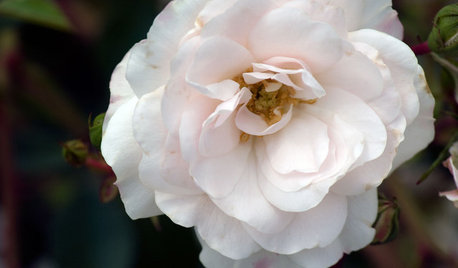Hole in rose cane
campv 8b AZ
11 years ago
Related Stories

WINTER GARDENINGPruning Secrets for Exquisite Roses
Encourage gorgeous blooms year after year with this time-tested advice on how to prune your rosebush in winter for health and shape
Full Story
GARDENING GUIDESWhat Kind of Roses Should You Grow?
Want to add the beauty of roses to your garden? Find out which ones, from old-fashioned to modern, are right for you
Full Story
PLANTING IDEASGreat Garden Combo: Rose + Clematis for Small-Space Impact
We all need somebody to lean on. And when a rose supports a climbing vine, the results can totally transform a small garden
Full Story
GARDENING GUIDESGreat Design Plant: Sally Holmes Rose
This simple yet versatile climbing rose grows vigorously all year; plant now for abundant spring and summer blooms
Full Story
GARDENING GUIDESRoses: Crowning Touch of Gardens
Whether you're the Miss or Mister America of gardening or take a hands-off approach, roses can be a winning addition to your landscape
Full Story
SPRING GARDENINGHow to Grow a Rose Garden in Pots
Everything can come up roses, even without a plot of soil in sight. This step-by-step guide to growing roses in containers shows you how
Full Story
GARDENING GUIDES5 Favorite White Roses for a Purely Beautiful Garden
How does your garden glow? With roses that look like light and smell divine
Full Story
GARDENING GUIDESGreat Design Plant: Knock Out Roses
As glorious as their high-maintenance kin for a fraction of the work, Knock Out roses make even beginners look like garden stars
Full Story
GARDENING GUIDESLearn the Secret to Bigger and Better Roses
Grow beautiful roses using both ordinary and unusual soil amendments
Full StoryMore Discussions









jacqueline9CA
seil zone 6b MI
Related Professionals
Birmingham Landscape Architects & Landscape Designers · Mitchellville Landscape Architects & Landscape Designers · Prairie Ridge Landscape Architects & Landscape Designers · Woodinville Landscape Architects & Landscape Designers · Garden City Landscape Architects & Landscape Designers · Arlington Landscape Contractors · Andover Landscape Contractors · Brookfield Landscape Contractors · Brownsville Landscape Contractors · East Haven Landscape Contractors · Maywood Landscape Contractors · Mequon Landscape Contractors · Royal Oak Landscape Contractors · Seymour Landscape Contractors · St. Louis Landscape Contractorsjerijen
Tuggy3
campv 8b AZOriginal Author
michaelg
campv 8b AZOriginal Author
michaelg